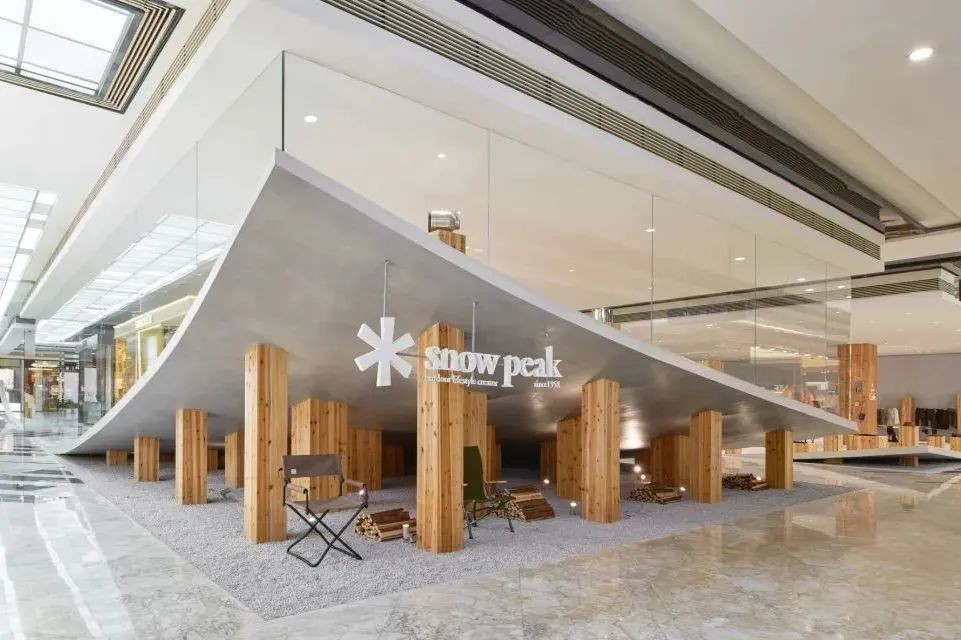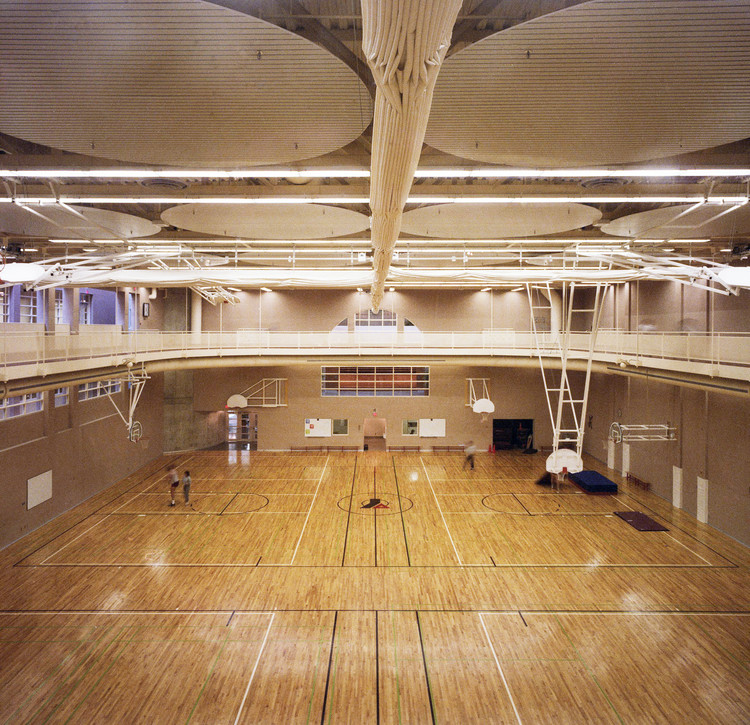Akiha Ward Cultural Center Chiaki Arai Urban and Architecture Design
2014-06-25 01:00
© Taisuke Ogawa
(小川太介)


架构师提供的文本描述。Akiha Ward文化中心位于新塔市一个以铁路工业闻名的地区,是一座3000平方米的公共剧院,有496个座位。这座建筑的设计是为等待已久的当地人提供文化孵化器。
Text description provided by the architects. Located in a district famous for railway industry in Niigata city, Akiha Ward Cultural Center is a 3000m2 public theater with 496 seats. This building is designed to be the cultural incubator for the locals who have long-waited for it.


坐在17000平方米的前棒球场上,沿着棒球场的弧形排列结构、景观和停车场,唤起人们对场地的记忆。
Sitting on a 17000m2 former baseball field, the structure, landscape and parking are organized along the arc of baseball field to evoke the site memory.
© Taisuke Ogawa
(小川太介)
.jpg)

周围地区是一个住宅区,在一个广阔的平地,很少有小山。随着一些山的一些特点,全球形成的建筑是梯田景观,人们可以登上和看到全景。
The surrounding area is a residential district on a vast flatland with few small hills. Following some characteristics of some hills, the global formation of the building is terraced landscapes where people can mount and take in the panoramic view.
© Taisuke Ogawa
(小川太介)


该计划是通过与当地人举办的讲习班制定的。应他们的要求,增加了几个房间和功能。从比赛阶段开始,无数次的变换把建筑轮廓从一个精确的圆圈变成了由46个不同的弧线组成的扭曲的圆形。
The planning has been developed through workshops with the locals. Several rooms and functions were added in response to their requests. From the competition phase, countless transformations changed the building outline from a precise circle to a distorted circular form composed of 46 different arcs.
© Taisuke Ogawa
(小川太介)


规划图按外部走廊、入口大厅、功能厅、后台走廊、主厅的顺序分层。由于图简单,可以从入口大厅和后台走廊使用几个功能房,如练习室和更衣室。这提高了业务可用性。为了适应整体构筑物与厂房规划之间的差距,结构混凝土墙体进行弯曲和扭转,以达到屋盖板的平衡支承点。
The planning diagram is stratified in the order of exterior corridor, entrance lobby, functional rooms, backstage corridor, the main hall. Due to the simple diagram, several functional rooms such as practice rooms and dressing rooms can be used from both entrance lobby and backstage corridor. This improves operational availability. To accommodate the gap between the global formation and the planning based on the workshop, the structural concrete walls are bent and twisted to reach the balanced support points of the roof slabs.
© Taisuke Ogawa
(小川太介)


大厅就像山下的混凝土洞穴。结构元素本身就像声学反射器,通过其高比重的力量提供了非凡的声学效果。厚重的实心墙和天花板可以反映传统墙体材料吸收的低音范围。这给我们提供了特殊的体验,让你感觉好像你是在一个自然的洞穴,而不是在一座建筑的音乐会。
The main hall is like a concrete cave under a hill. The structural element itself works as acoustic reflectors which give extraordinary acoustics by the force of its high specific gravity. The heavy solid wall and ceiling can reflect the lower sound ranges which conventional wall materials absorb. This provides us with special experiences which makes you feel as if you were at the concert in a natural cave, and not in a building.


为了优化声学效果,混凝土结构采用网状孔结构,多孔铝板作为吸声剂安装在孔内。大厅的混凝土结构内部装修充分,便于声音扩散。有了照明效果,坚固的混凝土有时看起来很大,有时没有重量,意味着人的手的温暖。
To optimize the acoustic effect, the concrete structure is perforated like a net, and the porous aluminum sheets are installed in the holes as acoustic absorbent. Interior finish of the concrete structure of the hall is fully-dabbed for sound diffusion. With the lighting effects, the solid concrete looks sometimes massive, sometimes weightless, and implies warmth of human hands.








.jpg)



.jpg)

























Architects Chiaki Arai Urban and Architecture Design
Location 4 Shineicho, Akiha Ward, Niigata, Japan
Category Cultural Center
Area 2997.0 sqm
Project Year 2013
Photographs Taisuke Ogawa
























